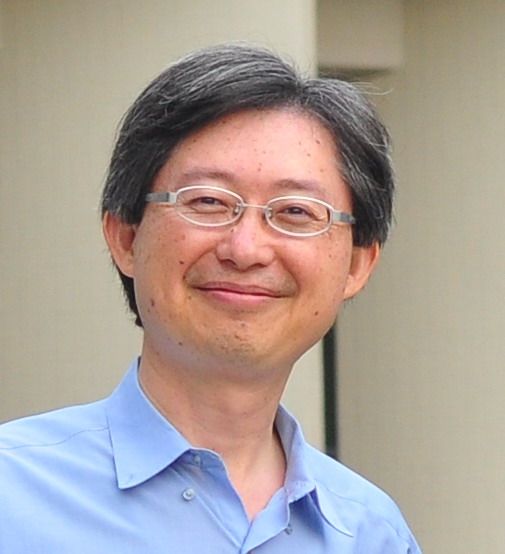报告地点:平板显示中心二楼大会议室
承办单位:新型显示技术及应用集成教育部重点实验室
报告1:
Shanghai University ADSA Seminar
Date: October 15, 2018
Time: 9:30-11:30
Liquid Crystal Cells as Platforms for Biosensing
Wei Lee
Institute of Imaging and Biomedical Photonics
College of Photonics, National Chiao Tung University
Guiren Dist., Tainan 71150, Taiwan
wlee@nctu.edu.tw
Microscopic texture observation has long been the core technique in liquid crystal (LC)-based biosensing or immunodetection. Its working principle stems from the dark-to-bright texture change induced by the interruption of the initially homeotropic alignment in nematic bulks in the presence of biomolecules. One of the drawbacks of this observational scheme, which requires a polarizing optical microscope as the key tool, is the difficulty in quantitative analysis. In this seminar, I shall report on our recent development of the spectral technique for LC-based label-free bioassays with high-birefringence nematic, cholesteric, blue-phase, dye and dye-doped LCs as the probing elements. Highlighted as well will be our further attempts to go alternatively for the electrical and dielectric data analysis of a model protein—bovine serum albumin (BSA)—or a cancer biomarker (CA125) commonly used in clinical cancer screening. In the dielectric study, I shall reveal, to the best of our knowledge, what is the first demonstration of dual-frequency LC applied in biosensing.
报告2:
Shanghai University ADSA Tutorial
Date: October 17, 2018
Time: 9:30-11:30
Transmissive Liquid Crystal Displays
Wei Lee
Institute of Imaging and Biomedical Photonics
College of Photonics, National Chiao Tung University
Guiren Dist., Tainan 71150, Taiwan
wlee@nctu.edu.tw
Current global LCD panel 10.5-generation manufacturers began their bulk of mass production after 2017, and the majority of the panel manufacturers are located in Mainland China. Indeed, the LCD industry in Mainland China is expected to continue flourishing and gradually dominate the global market. Any graduate student in related science and engineering fields should be equipped with some background knowledge of the well-developed and yet still fast-evolving display technology. Since most of the LCD products are of transmissive type, I’d like to give a lecture, utilizing limited time, on transmissive LCDs. The topics to be covered are as the following:
l Twisted Nematic (TN)
l First Minimum in TN–LCD
l Super Twisted Nematic (STN)
l Parallel or Planar Aligned (PA) Cells
l In-Plane Switching (IPS)
l Vertically Aligned (VA) Cells
l Ferroelectrics
报告3:
Shanghai University ADSA Lecture
Date: October 19, 2018
Time: : 9:30-11:30
Technical Writing and Oral Presentation in English—1. Writing an Attractive Introduction Section
Wei Lee
Institute of Imaging and Biomedical Photonics
College of Photonics, National Chiao Tung University
Guiren Dist., Tainan 71150, Taiwan
wlee@nctu.edu.tw
Many graduate students found writing an introduction quite difficult when they prepare a term paper, conference proceeding or a journal paper in English. Unfortunately, unwanted plagiarisms often take place due to the lack of technical writing skills (and the well-understood hurdle—poor command of the English language). I have more than ten years of experience in teaching English for Science and Engineering (one-semester course) and have taught Technical Writing in English to graduate students in every academic year since 2012. The latter is a semester-long course including a three-hour supplementary lecture on oral scientific presentation. The course was implemented to the three graduate programs in the College of Photonics of NCTU when I transferred to the College in February 2012. Because of the time constraint, I will only focus on the skills about writing an introduction:
l Structure
l Grammar and Writing Skills
l Building a Model
l Vocabulary
报告人李伟教授简介:

Wei Lee received his M.S. degree in electro-optical engineering from National Chiao Tung University (NCTU), Taiwan, in 1987 and Ph.D. degree in physics from the University of Alabama at Birmingham (UAB), AL, in 1993. He was a lecturer at UAB between 1993 and 1994 and a full-time visiting assistant professor of physics and astronomy at the University of Toledo, OH, between 1994 and 1997. From August 1997 through January 2012, Dr. Lee was affiliated with the Department of Physics, Chung Yuan Christian University, Taiwan. He took his sabbatical leave as a visiting professor of optics at CREOL of the University of Central Florida, FL, during the academic year of 2009–2010, and was a visiting scholar at the L. V. Kirensky Institute of Physics, Siberian Branch of the Russian Academy of Sciences, Russia in 2010, 2015 and 2018. Prof. Lee was the Director of the Institute of Imaging and Biomedical Photonics, College of Photonics, NCTU (Tainan Campus), between 2012 and 2015. He served on the editorial board of the OSA journal Optical Materials Express as a founding associate editor for two terms from 2011 through 2016. He was the President of Taiwan Liquid Crystal Society for two terms between 2014 and 2017 and an executive committee member—Optical Groups Liaison—of the Optical Materials Study Group, the Optical Society (OSA), from 2015 through 2017. He served as the Conference Chair of the 3rd Asian Conference on Liquid Crystals (ACLC 2017) held in Tainan, Taiwan, and General Chair of the 102nd annual meeting of OSA (FiO/LS 2018) held in Washington, D.C.. Dr. Lee is currently a board member of the International Liquid Crystal Society and has worked in the research areas of liquid-crystal (LC) optics, structural vibration analysis, laboratory astrophysics, physics education, and pedagogy of English for science and technology for non-native speakers since 1985. Prof. Lee has been a reviewer for 78 different academic journals. His recent research interests focus on LC photonic and dielectric properties, photonic crystals, plasmonics, and LC-based biosensing.